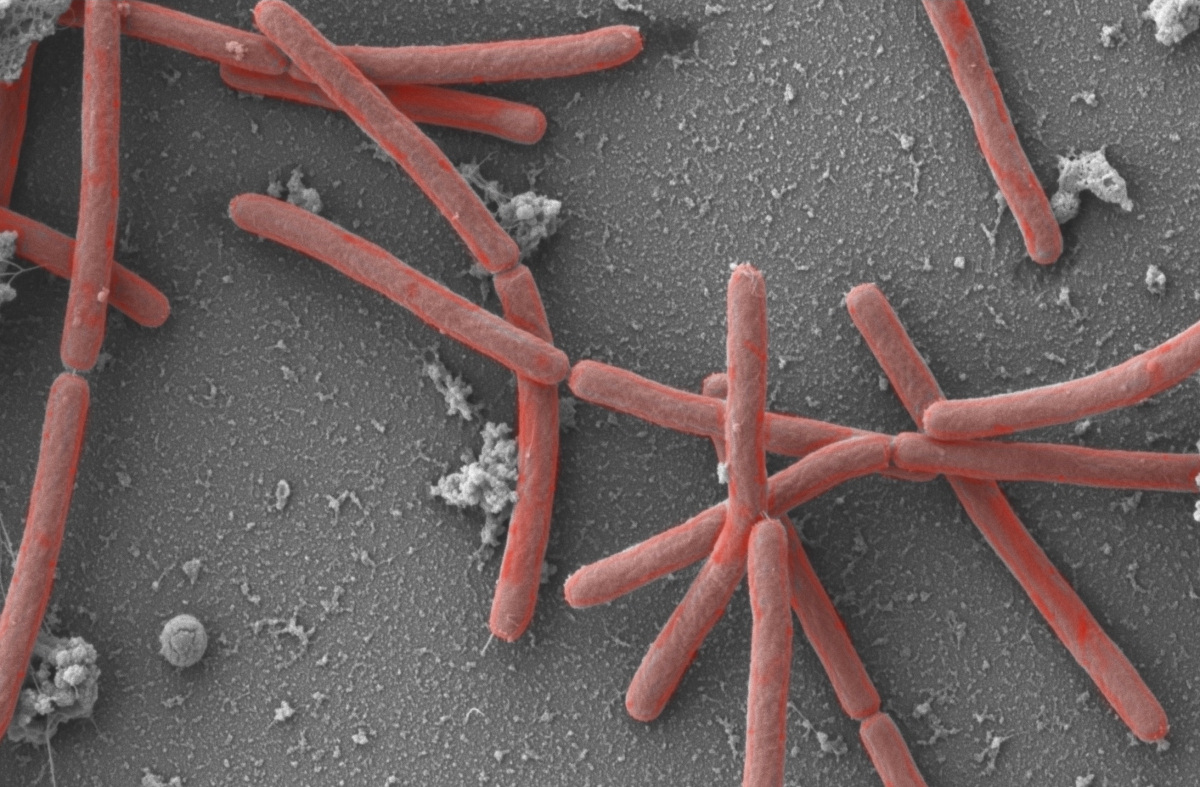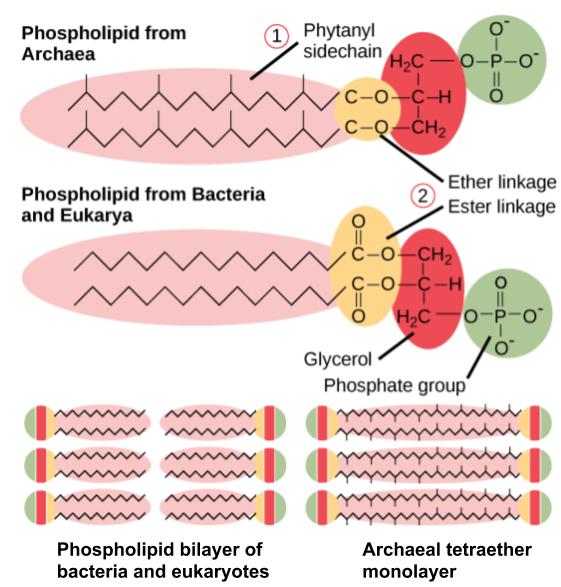Superheroes don’t exist in the real world (or at least that’s what the government keeps telling us) but these microorganisms are pretty close to being actual superheroes. They don’t breathe, they’ve been around for billions of years, and can survive in the most extreme environments on Earth. Enter the world of Archaea.

Biologists call these super micro beings Archaea. They share the name with the Archean Eon, the second oldest geologic eon of Earth’s history, which lasted from 4 billion to 2.5 billion years ago. Archean literally means ‘beginning, origin — you know, like how archaeology is the study of our origins. During the Archaean, the planet’s crust cooled down sufficiently for life to emerge — and emerge it did.
Studies suggest that archaea have been around for more than 3.5 billion years, so they are among the oldest life forms that originated on Earth — if not the oldest. They’re also some of the “friendliest” microorganisms. Unlike, bacteria and viruses, members of archaea have not been found to cause diseases and infections in other organisms (including humans). Instead, they are known to maintain mutual or commensal ecological interactions, using a great variety of chemical reactions to produce energy. Moreover, they also play a major role in managing the Earth’s ecosystem by facilitating carbon and nitrogen cycles in nature.
Some of them are found deep in the oceans, some prefer to live near volcanoes, and some love us humans so much that they make their homes inside our gastrointestinal tracts. But that’s not even the coolest thing about them.
The secret behind archaea’s super strength
Archaea are single-celled prokaryotes. They’re also called archaebacteria because they were previously (and wrongly) categorized under the bacteria domain. However, it was later discovered that archaea and bacteria are not at all similar as their cellular and RNA composition differs drastically.

Archaea cells contain three RNA molecules whereas a bacterial cell contains only a single RNA molecules, the cell membrane of a bacterium consists of either lipopolysaccharides or murein — a polymer consisting of sugars and amino acids that forms a mesh-like structure. But the archaebacterial cell membrane is made from pseudomurein — which resembles murein, but is different. Though species from both the archaea and bacteria domains can inhabit the human body, archaebacteria are also famous for their ability to thrive in some of the Earth’s most extreme habitats. However, unlike true bacteria, they are not able to produce spores and reproduce asexually.
Because of their ability to survive in extreme environments, archaea are also considered extremophiles. There’s virtually no end to their adaptability to Earth’s conditions. From deep-sea hydrothermal vents to acidic sulfuric pools, alkaline marshlands, and volcanic craters, they’re found in almost every place where almost no other life form can survive. Their microscopic bodies can withstand high atmospheric pressure levels, harmful gamma radiation, and even temperatures exceeding 110 degrees Celsius. So it shouldn’t surprise you if a scientist detects their presence in a geyser or volcano.
The reason why archaea are able to survive in extreme conditions lies in their distinct cellular membrane composition. Instead of ‘normal’ lipids that make up bacterial and eukaryotic cell membranes, archaeal membranes consist of archaetidic acid and glycerol-ether lipids, which form much more stable and resilient molecular bonds.
Another important difference is that these special lipid layers form densely branched chains that further fuse into lipid monolayers. Bacteria and other types of cells have a bilayer, but a monolayer is more chemically balanced and has sturdy chemistry. This extra stable and rigid lipid layer arrangement prevents the disintegration of the archaeal cell membrane at high temperatures.

The cellular protein in different archaeal organisms also plays an important role in their survival. For example, cellular proteins in halophiles have high amino acid levels, in thermophiles, the proteins have a strong hydrophobic core, and acidophile cells, on the other hand, are able to maintain a neutral pH all the time.
These adaptations in cellular protein along with the unique lipid membrane arrangement in archaea allow them to effectively manage their internal environment as per their respective external conditions.
The role of archaea in our ecosystem
Ecological recycling takes place on Earth by the means of various mineral cycles such as the oxygen cycle, carbon cycle, nitrogen cycle, etc. The process of recycling is crucial for the functioning of our ecosystem because it ensures the exchange of nutrients and minerals between living (humans, plants, animals, etc) and non-living forms of matter (water, soil, etc).
In recent years, various studies have found that archaebacteria play a key role in keeping the ecological cycle on the move.

Metagenomic studies suggest that archaebacteria (like the Nitrosopumilus maritimus) under the phylum Crenarchaea aid significantly in nitrogen cycle stages such as ammonia oxidation and nitrification. The production of methane gas (also called biogas) in nature is also carried out by archaea like Methanosarcina barkeri, Methanocaldococcus jannaschii, etc. Some experts claim that methanogens (methane-producing microbes) were Earth’s first free-living life forms.
These creatures also play a role in the Calvin cycle — the stage of photosynthesis at which glucose is formed. The cycles start from carbon fixation which is facilitated by various members of the archaea genera called Sulfobolus and Pyrococcus. A common myth about these archaebacteria is that they are capable of carrying out photosynthesis — but this is not true and their role is limited to the process of carbon fixation. Microbes in the Sulfobolus genus are also considered important for the oxidation of elemental sulfur and in studying DNA replication in archaea.
Basically, if you take any natural chemical cycle on the Earth, there’s a good chance that archaea play some role in it at some stage.

Archaea are also known to develop different kinds of ecological relationships with bacteria and eukaryotic organisms. All of these interactions are positive (or neutral) in nature. Basically, archaea are more a giver than a taker. For instance, a mutualistic relationship between methanogens and protozoans provides the former with abundant hydrogen and the latter with high energy levels. Similarly, Methanobrevibacter smithii, an archaebacterium that is part of the human gut microbiota, is believed to improve polysaccharide digestion in our bodies by consuming additional hydrogen. Some methanogenic archaea also have a symbiotic relationship with termites.
Interestingly, archaea are now also being used in various chemical processes that are useful for humans. They are increasingly used in the production of antibiotics, sewage treatment, extraction of metals, and various biotechnological experiments. Several research groups are working on ways to harness the power of archaea for the benefit of mankind.
Overall, Archaea have been immensely impactful creatures in the history of the Earth — and will likely continue to be so for the foreseeable future. They’ve been around for over 3 billion years, are incredibly diverse, and can survive in varied and often extreme environments, from lakes to soil and human intestine they are now found almost everywhere on Earth.






